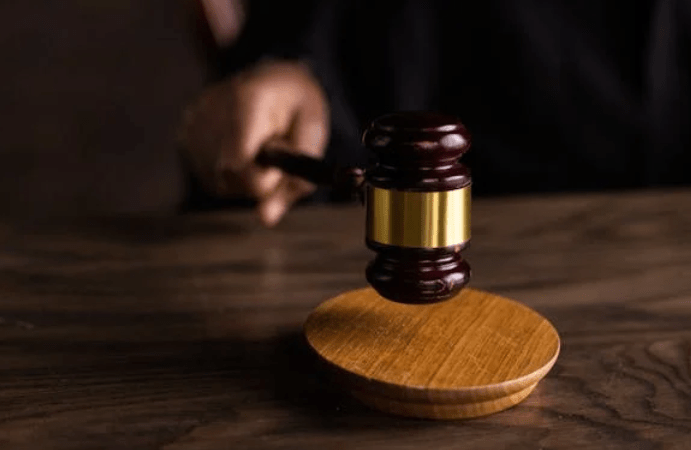Pope Francis to preside at burial mass for predecessor

Thousands of people have been paying their respects to former Pope Benedict XVI at his lying in state in the Vatican.
He died on New Year’s Eve at the age of 95, almost a decade after he stood down because of ill health.
Pope Francis will preside over Thursday’s funeral – the first time a Pope will be buried by his successor.
As dawn broke over the Vatican, a queue had already formed at the edge of St Peter’s Square.
And Vatican police said some 40,000 people filed past his body in the first five hours, where a pair of Swiss Guards – the traditional papal bodyguards – stood watch.
At the very front was Father Alfredo Elnar, 30, from the Philippines. He said he had studied and admired the theological writings of the former pontiff, and spoke of an emptiness since his death.
Open casket
A little further back, Sister Marianna Patricevic, a nun from Croatia, talked of how grateful she was for all the late pope had done – saying there was not a subject she studied at university where they did not discuss his views.
Father Richard Kunst, visiting from the US, said when he passes the Pope’s body, he would pray for him – but also for a miracle to help a friend at home who is dying of cancer.
Benedict XVI became the first Pope to resign in 600 years in 2013, citing ailing health.
His body will be displayed for three days in an open casket at St Peter’s Basilica, with people allowed to pay their respects until 7pm each evening.
Many of those who filed into the basilica on Monday made a sign of the cross or stopped to pray as they passed the former Pope’s body – which has been displayed without papal insignia or regalia. Others took pictures on their mobile phones.
One man who had been inside, Mountain Butorac, said the experience was “beautiful” and “humbling”.
The Catholic pilgrimage organiser was queueing to view the former Pope’s body for a second time, this time with his family. He said the mood was “sombre” but “joyful”.
He described Benedict as a “a very gentle” and “humble” man, who was like a “papal grandfather” to him.
Mourning robes
Before the church was opened to the public, Italian President Sergio Mattarella and Prime Minister Georgia Meloni were among those who paid their respects.
The funeral will take place in St Peter’s Square, before the Pope Emeritus is laid to rest in the tombs beneath the Basilica.
The Vatican released pictures of the body on Sunday, dressed in red papal mourning robes and wearing a gold-trimmed mitre.
Tributes have poured in from around the world, and the funeral is expected to draw crowds of thousands.
The last papal funeral, that of Pope John Paul II in 2005, was one of the largest Christian gatherings in history, and drew an estimated four million people to Rome.
Benedict asked that the funeral be marked by simplicity, Vatican spokesman Matteo Bruni told journalists.
Details of the guest list have not been released, but the Vatican has said that it will include delegations from Italy and Benedict’s native Germany.
Pope Francis paid tribute to his “dearest” predecessor after his death.
US President Joe Biden lauded the former Pope’s “lifetime of devotion to the Church”, while Italian Prime Minister Giorgia Meloni hailed him as “a great man whom history will not forget”.
In Brazil – the largest Catholic nation in the world – incoming President Luiz Inácio Lula da Silva said he wished “comfort to the faithful and admirers of the Holy Father”.
Pope Benedict was a controversial figure, and some have criticised him for failing to tackle allegations of clerical sexual abuse.
The funeral Mass for Pope Benedict XVI will be a papal funeral with a few changes to fit with the fact that he was not the reigning pope and has not left behind a “sede vacante.”
“The liturgical celebration follows the model of a funeral service for a supreme pontiff, broadly speaking,” Matteo Bruni, director of the Vatican press office, told reporters Jan. 3.
While based on a traditional papal funeral, he said, it will have “some new elements that give the rite its originality and some missing elements, which are those that are more pertinent to a reigning pontiff.”
For example, there are no final prayers offered by representatives of the Diocese of Rome and of the Eastern Catholic churches, since those prayers are specific to the death of a reigning pope, who is bishop of the Diocese of Rome and is in communion with the leaders of the Eastern-rite churches.
Bruni spoke to reporters in the Vatican press office after the booklet for the funeral Mass was published by the Office for the Liturgical Celebrations of the Supreme Pontiff.
The Mass booklet features a color reproduction of Caravaggio’s “Deposition” or entombment of Christ — a 17th-century masterpiece housed in the Vatican Museums.
Some differences can be seen in some of the prayers and the readings, Bruni said.
The first reading will be taken from the Book of Isaiah (29:16-19) in which the Lord says there will be a day when the deaf will hear the words of a scroll “and, after gloom and darkness, the eyes of the blind will see. But the lowly will rejoice in the Lord even more and the poorest exult in the Holy One of Israel.”
In comparison, the first reading at St. John Paul II’s funeral Mass was “Peter’s Speech” from the Acts of the Apostles (10:34-43), which speaks of the apostles’ mandate to preach and testify that everyone who believes in Christ “will receive forgiveness of sins through his name.”
The second reading for the January 5 Mass is from the first letter of St. Peter (1:3-9) which praises God’s mercy giving the faithful “a new birth” as his children and “by raising Jesus Christ from the dead, so that we have a sure hope and the promise” of eternal life in heaven.
The second reading at St. John Paul’s funeral was from the letter of St. Paul to the Philippians (3:20-4:1) about the faithful’s “citizenship in heaven.”
The Gospel reading for Pope Benedict’s funeral Mass was to be from St. Luke’s account of Jesus’ final moments on the cross and telling the “good thief” who recognized him as the Christ, “today you will be with me in paradise.” The Gospel reading for St. John Paul’s funeral Mass was from John (21: 15-19) when Jesus told Peter to feed his sheep.
Notable changes
The only other notable changes are in the prayers of the faithful. They include petitions for “Pope Emeritus Benedict, who has fallen asleep in the Lord: may the eternal Shepherd receive him into his kingdom of light and peace,” followed by a prayer “for our Holy Father, Pope Francis, and for all the pastors of the church: may they proclaim fearlessly, in word and deed, Christ’s victory over evil and death.”
Pope Benedict had wished his funeral to be simple, Bruni had said, emphasizing it would be “solemn, but sober.” Pope Francis will preside over the funeral Mass in St. Peter’s Square and Cardinal Giovanni Battista Re, dean of the College of Cardinals, will be the main celebrant at the altar.
Some traditions connected with the death and burial of a pope will be followed, Bruni said, such as three objects being deposited in the pope’s casket before he is buried: his palliums, coins and medals minted during his pontificate, and a “rogito” or scroll that summarizes in Latin the highlights of his papacy.
Responding to questions about whether Pope Benedict XVI would be buried with a pastoral staff or a papal ferula, which is a staff topped with a cross, Bruni said the ferula is only held by a reigning pope and that no pope is ever buried with either item.
After public viewing of his body ends the evening of Jan. 4, Pope Benedict will be placed in a traditional cypress casket, following a traditional ritual, Bruni said.
Before the funeral, the casket will be carried into St. Peter’s Square and the faithful will be asked to join the recitation of the rosary before Mass.
After the funeral, again following tradition, the casket will be sealed and wrapped with ribbons, then it will be placed inside a zinc casket that will be soldered and sealed, and then that will be placed inside a casket made of wood.
The moment of his burial in the grotto of St. Peter’s Basilica, where other popes are buried, will be private, Bruni said.
– Agencies










